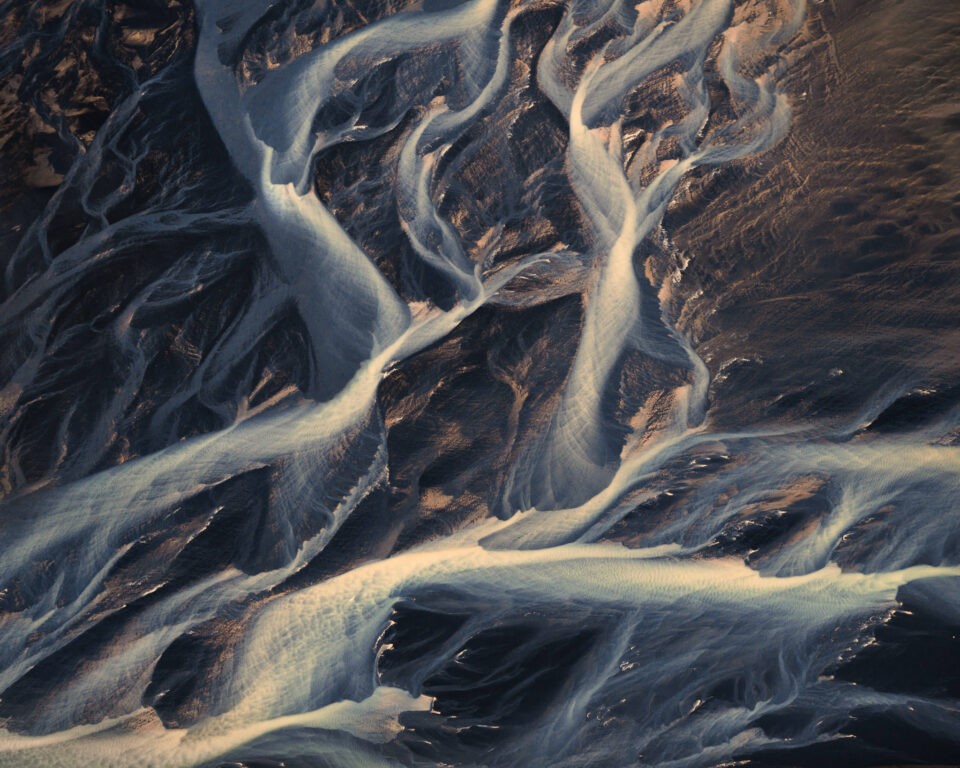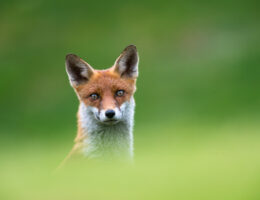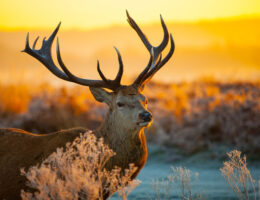IRAN ART EXHIBITION: COMPLETE GUIDE TO ABSTRACT PHOTOGRAPHY FOR BEGGINERS
What if the most interesting subjects to photograph aren’t subjects at all – or, at least, not ones you can recognize easily? I’m referring to abstract photography, the “grand unifying genre” of photography, relevant to everything from landscapes to portraiture. Sometimes, taking an abstract photo is the best way to convey the emotions you want; in other cases, it strips your images of vital context. Hopefully, the tips and ideas in this article will help you practice it properly.
Once You Remove the Subject, What’s Left?
There’s a lot more to a photograph than the specific scene you’re capturing. Indeed, the most important parts of a photo often are the “intangibles” – things like composition, mood, and emotion.
Your subject certainly affects these variables. If you’re taking pictures of a smiling couple at a wedding, the photo’s mood is likely to be pleasant and cheerful. But by the same token, you can take photos that are pleasant and cheerful without always and only photographing people at weddings. So, the underlying mood of your photo is somewhat malleable, not irreversibly tied to one particular subject or another.
That said, when you take abstract photos, there is no denying that you lose an important part of the image. Sometimes, that loss is essential – you would be justified in firing a reporter who takes nothing but abstract photos of new legislation being signed.
But with other types of photography, removing the subject doesn’t ruin the photo, and it can even make it stronger. Abstract photographers still have plenty of tools at their disposal to take great pictures:
• Light: Bright versus dark, harsh versus gentle
• Color: Warm versus cool, vibrant versus subdued
• Texture: Smooth, rough, hard, soft, and countless variations
• Composition: Balanced, imbalanced, dynamic, static, open, closed, busy, simple
• Emotion: Any mood you can imagine, born of the elements above
Not to mention that abstract photos can still hint at the subject – say, nature versus an industrial scene – which can change the mood of the image as well. In short, abstract photographers have plenty of ways to get their message across.
Semi-Abstract Photography
Before going any further, take a moment and try to define abstract photography. What does it mean to you?
Is a photo “abstract” only when you can’t tell what the subject is, no matter how hard you try? What about a case where you do understand what the photo shows, at least at some level, but the more important parts of the image are its lines, shapes, structure, and so on?
This is the difference between abstract and semi-abstract photography.
Many of the photos in this article are semi-abstract, meaning that you will have at least an idea of what the subject is when you see them. They are not “true abstract” in the sense of some paintings, where there is no distinct subject at all, just lines or colors on a canvas.
Because photography is so literal, it’s more common to see semi-abstract photos than completely abstract work. That’s especially true if you ignore images which are blurred and distorted beyond all recognition; very few pin-sharp photographs are so unexpected that it is impossible to figure out any sort of subject.
That’s not a bad thing, though. Sure, maybe you can tell that a certain photo depicts a building, but that doesn’t mean it is a purely literal image that takes no cues from abstract photography. Semi-abstract work can have a lot of impressive qualities.
IRAN ART EXHIBITION: In fact, maybe everyday photography (the non-abstract kind) can gain something from adopting this perspective more often – composing your scene as if it is an abstract collection of lines, shapes, colors, textures, and harmonies, culminating to form your chosen emotional message – with the literal nature of your scene almost a secondary fact.
This is something I often see in my favorite images from other photographers. The image might show a cloud over a mountain, but something about the photo or the composition feels separate and independent of the subject. It’s like the photo isn’t really showing the cloud and mountain, but their shapes and tones instead.
Again, that’s not to say this is always ideal, such as documentary work, or photos where the subject is so impressive or unusual that it already anchors the photo completely. But at least in some cases – even when you’re not obscuring anything about the subject – the “abstract mindset” is a good one to have.
Abstract Photography Tips
1. Look for Shapes, Not for Subjects
Abstract photography is about telling your story through aesthetics and elements of composition more so than through a subject.
So, loosen up your mind a bit. Don’t see the world as individual things to take pictures of, but as lines, shapes, colors, textures, shadows, and highlights.
Look at the sky and see bright blobs rather than clouds. Look at a building and see repetitions of geometric shapes, not windows and terraces. Look at the ground and see a swath of green to anchor your composition rather than a field of grass to include in your photo. Arrange those forms and colors so they complement each other, regardless of the particular subject hiding underneath.
This is where all the tools from earlier come into play: light, color, texture, composition, and emotion. When you’re able to “see beyond the subject,” your abstract photos will grow better and better.
2. Play with Post-Processing
With abstract photography, you have much more leeway than normal when editing an image, since you’re the only one who really knows how the original subject appeared.
I don’t recommend going crazy with every abstract picture you take, or even with most. That’s something that depends upon your style and personal limits in post-processing. But if you want crazy colors or more flexibility in how your images appear, now’s your chance.
IRAN ART EXHIBITION: Personally, I like using abstract photography as an excuse (in some sense) to take high-contrast black and white photos that look within the realm of normality, or at least don’t look overdone. We’re much more forgiving about the “realness” of an image when we can’t easily tell what the subject is in the first place.
3. Isolate a Slice of Life
You can take abstract photos via a variety of different methods, but it’s often a result of simplification to the most extreme. You are looking at a scene in front of you and cutting out everything that doesn’t add to your message – including, if necessary, the ability to identify your subject in the first place.
So, how do you remove the context from an image so much that it becomes abstract? Usually, it’s about zooming in to isolate a particular feature, or walking close enough to your subject that extraneous details fall out of the frame on their own.
This is also why macro photography is so conducive to abstract work (more on that later). If you’re looking for ways to take abstract photos, and you’re not sure where to start, shift your attention to a small detail of your subject – the one which conveys its essence as much as possible.
4. Embrace the Mystery
Abstract photos deliberately hide something from the viewer; if you can’t distinguish the subject, the subject could be anything. That sense of mystery can be a valuable tool.
Done well, abstract photos can raise questions that require a deeper look in order to answer. Viewers may spend more time on your work, noticing details that they otherwise would miss. In some cases, it means they are more likely to form an emotional connection to the image.
Although you don’t always have to embrace the mystery behind abstract images, it’s a useful tool to employ in some cases. You can look for ways to eliminate context to the degree that the photo draws interest and attention, with more people trying to study every little detail to find its hidden secrets. For certain images, it is a way to make your photography more engaging.
5. Be Willing to Experiment
Abstract photography is more open to experimentation than many other genres, in everything from composition to camera settings.
Normally, there might be a formula you follow in order to get good photos of a certain type – such as a particular pose, composition, lighting style, focal length, aperture, and shutter speed for portrait photography. Abstract photography throws that concept out the window.
IRAN ART EXHIBITION: In a sense, it’s like starting photography anew; there are no rules to the game any longer. You don’t have to follow a similar set of steps before taking every photo – nor should you. You have more freedom in choosing whatever technical and creative variables necessary in order to convey your emotional message. (Once again, non-abstract photography could benefit from adopting this approach more often.)
So, if you’re doing abstract photography, go out and experiment! There’s a lot of room to try things out and test the waters in this genre. Your results might surprise you.
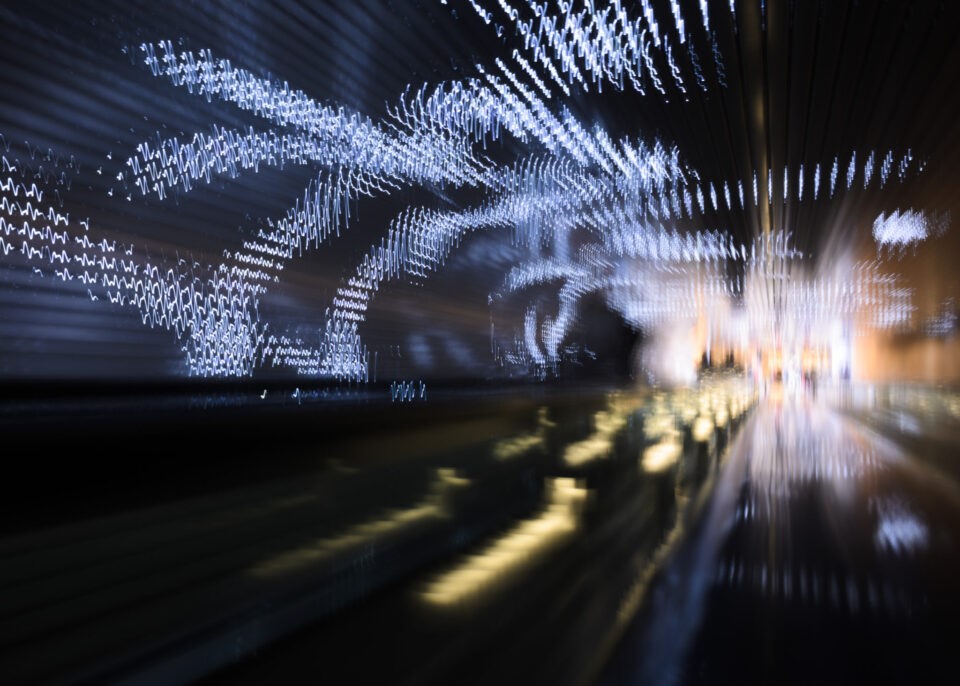
Ideas and Inspiration
If you’re feeling inspired to go out and take some abstract photos, but you don’t know where to start, you might find this list to be useful. Here, I’ve compiled roughly 30 ideas that make for great abstract photography subjects, including many which are easy to photograph even at home. This list certainly doesn’t cover everything, and it’s worth brainstorming some additional ideas for yourself, but it should give you a good place to start.
Macro Photography
Abstract macro photography is a very natural genre to emerge, since the small world already feels so alien to us. Any time that you focus on a plant, animal, or object up close, you’re already showing it differently from what we see in our day-to-day lives.
1. Water droplets: One of the best subjects for abstract photography, since they take so many different forms. Water is an abstract photographer’s best friend.
2. Flowers: Up close, we can see intricate textures and details in flowers (and other plants) that simply aren’t visible under normal conditions.
3. Rock textures: Some of my favorite abstract photos are of the patterns found in rocks, from smooth and gentle to angular and geometric. At times, you can’t tell how large or small your subject really is.
4. Feathers: With naturally interesting repetition and colors, it’s no wonder that feathers are such a popular subject for abstract photography.
5. Bubbles: This is another case where patterns and textures can become the subject of your photo, along with the interesting colors often found in bubbles.
Close-Up Photography
IRAN ART EXHIBITION: Similar to macro photography, close-up photography steps back just a bit to provide a wider view of a scene – but not enough to include all the context of your subject. The result is similar, though, with close-up photos removing context in order to intrigue a viewer. You don’t need a macro lens or other specialty equipment; just move closer to your subject until all the extraneous details have faded away.
1. People: You’ll often see close-up pictures of people that show a small detail, such as hands, a shoulder, arms, lips, and so on. These are too far away to be “macro” in the truest sense, but they qualify as abstract (or semi-abstract) because they stop short of revealing the entire subject.
2. Studio: Any object can be “abstracted” in the studio, from office supplies to silverware. Play around with mirrors, backgrounds, lighting, and post-production – along with composition – and you can reveal the character of ordinary objects in a much more unusual way.
3. Nature: Natural scenes that don’t qualify as macro can still count as a close-up. This is everything from patterns in the ice to textures of tree bark; the possibilities are nearly endless.
Long Exposure
In a photo, anything that moves can be blurred. Even if it doesn’t move, you can add camera motion to accomplish a similar effect. This is a great benefit for abstract photography, since we don’t see the world as a blur. With a long exposure, you reveal motion that wouldn’t be visible under ordinary circumstances.
1. Water: This is one of the most obvious subjects that you can make blurred, since water is everywhere, and it’s almost always moving. Try a long exposure with rivers, waterfalls, the ocean, and so on; the results can be both breathtaking and mysterious.
2. Clouds: Okay, they’re also water, but clouds deserve a special mention here because they move in such interesting ways. On a windy day, with a long enough shutter speed, the swirling patterns of clouds make for amazing abstract images.
3. Light trails: If you take pictures of cars, trains, boats, ferris wheels, fireworks, or any other moving object with lights, it’s easy to set a long shutter speed and watch the abstract results roll in.
4. Camera blur: Last but not least, if you’re taking pictures of a subject that doesn’t move, you can always add motion blur from the camera itself (or even in post-processing) to create an abstract result.
Aerials
For most of our day-to-day lives, we see the world from eye-level or so. At most, we’ll look out the window of a tall building – but how often do we stare straight down at the ocean, or a mountain, or a river? This is why aerial photography is such a powerful tool for abstract work; it shows people the world in a way that they rarely see.
1. Ocean waves: The ocean, with its interplays of light and weather, is one of the most fascinating aerial subjects you’ll find. Whether from a drone, helicopter, or plane, you can take amazing photos of coastlines and other ocean scenes that convey an interesting abstract feel not seen in other contexts.
2. River valleys: The winding, fractal nature of rivers from above can remind us of tree branches, blood veins, and swaths of fabric. Personally, as someone who loves abstract aerial photography, rivers are perhaps my single favorite subject of all.
3. Urban scenes: Man-made objects can look very interesting and otherworldly from above, including everything from skyscrapers to roads. From a legal perspective, this one can be trickier to accomplish, but you may find flight-seeing tours in certain cities that let you capture urban scenes from above.
Landscape Photography
IRAN ART EXHIBITION: Some of the patterns found in nature are so unexpected and intriguing that they instantly make perfect abstract subjects.
1. Sand dunes: Did I even need to mention how well sand dunes can work for abstract photography? They are simply lines, shapes, and textures, with sweeping patterns that change in mood drastically depending upon the light. Few subjects are more compelling for abstract work.
2. Rock formations: Sometimes, you’ll find rock formations that look totally otherworldly, such as slot canyons and layers of sandstone. If you’ve ever seen images from Antelope Canyon, you’re probably envisioning them already.
3. Nighttime landscapes: When the world is lit by the moon and stars, everything begins to look a bit surreal. Personally, I love the mood that nighttime imparts on a landscape, regardless of your subject. After dark, don’t just photograph the Milky Way with a wide angle; look for abstract details that you can pick out as well.
4. Telephotos: Regardless of the particular landscape you photograph, a telephoto lens can pick out certain details and make them appear especially important. From mountains to oceans, use a long lens if you want to isolate something about the scene – lighting, colors, texture, shape, and so on – that otherwise would be overpowered by the larger view.
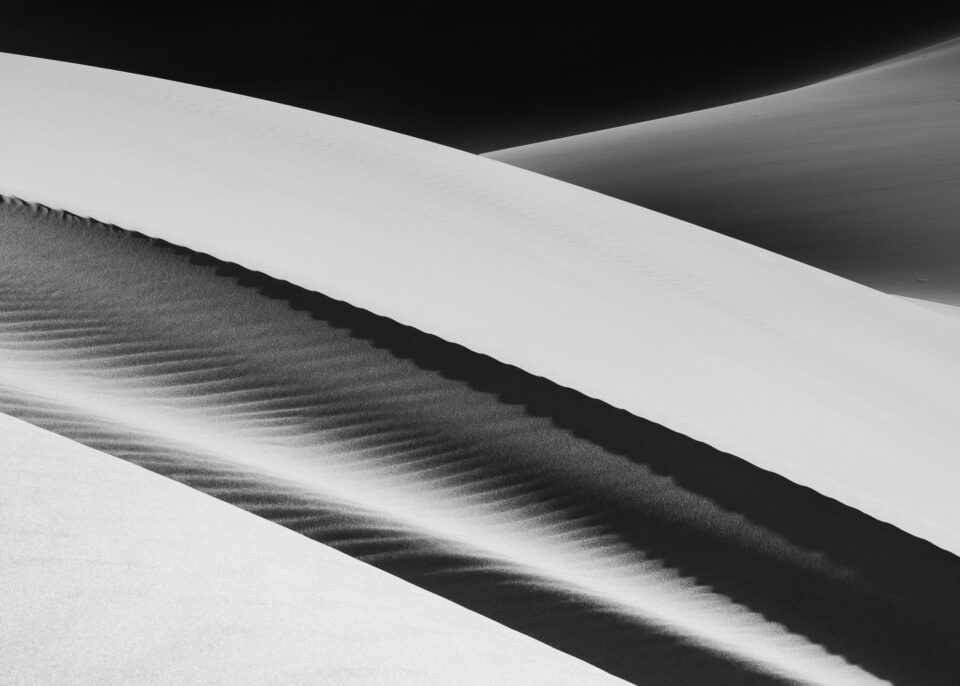
Shadows
The quintessential subject for abstract photography, shadows echo the shape of an object while obscuring most of its other details. You can take abstract shadow photos of practically any subject, so I won’t list all of them here. But there are a couple special cases that you might want to keep in mind.
1. Silhouettes: One of the best ways to peel off the layers of a scene is to capture it as a silhouette. No details, no colors – just the shape of your subject against its background.
2. Black and white: Shadows already simplify the structure of your subject, and monochromatic photography can do the same for the rest of the photo. It’s very common to see abstract pictures with deep, high-contrast shadows and a black and white conversion.
Cities
Cities are a playground for abstract photographers, with massive scenes of repeating geometric elements mixed with a variety of interesting textures.
1. Architecture: Indoors or outdoors, you’ll find a number of architectural scenes with a sense of mystery to them. Buildings are some of the largest subjects you can capture that still qualify as abstract. Try varying your camera angle; look up and down to get a different perspective on an otherwise ordinary scene.
2. Geometry: Even if you’re not shooting big architectural scenes, take a look at the smaller geometrical details you’ll find in a city. This can be anything from an outdoor scene with interesting light to a pattern you find on the ground.
3. Telephotos: Although photographers tend to associate architectural shots with wide-angles, try zooming in next time. With a telephoto, you can juxtapose several buildings in the distance together and pick out interesting patterns from the broader scene. That’s excellent for abstract photography.
Defocus
IRAN ART EXHIBITION: Along with motion blur, you can also experiment with out-of-focus blur in your photographs to create an abstract effect. This is something you can do with any subject, although it can be especially interesting if you take defocused photos of lights and colors. Some lenses will work better for this than others, with certain photographers even using makeshift modified lenses specifically to get an interesting out-of-focus look.
Light Painting
One of the best ways to create pure abstract photos, where the subject is essentially nonexistent or indecipherable, is to do light painting photography. With a long exposure in a dark environment, you can shine a flashlight (or any other light) at the camera to create interesting patterns.
Film Photography
Sometimes, you’ll be able to experiment with effects in film photography (and related darkroom work) that aren’t easy to replicate digitally. In the darkroom, for example, you can create abstract “photos” simply by shining the enlarger on a sheet of light-sensitive paper while placing various objects on the paper.
This applies to everyday objects like paper towels or water droplets on a sheet of glass, which you can also move around or hold at different angles to get a wide variety of results. Then, by altering the development process afterwards (say, partly developing the paper, or developing it more in some areas than others), you can end up with very intriguing abstract images.
Scientific
The last set of ideas for abstract photography are in the broader field of science, where you can capture all sorts of interesting images that are different from how we ordinarily see the world.
1. Microscopic: The small, small world that’s only visible with a microscope is one of the most interesting subjects for abstract photography. Not everyone has the means to take this sort of photo, but if you do, make the most of it.
2. Telescopic: You’ve probably seen some beautiful abstract photos of the night sky, from comets to colorful nebulae. Much of this photography requires specialized equipment, but there are some subjects which you can photograph largely with the gear you already have (such as a solar eclipse).
3. Wavelengths of light: Who says you’re restricted to visible light when taking pictures? Sure, it can be expensive to take pictures of certain wavelengths of light, but if you have access to that equipment, the results can be amazing. Even infrared cameras, which are comparatively accessible to everyday photographers, can reveal a world that looks very different from our expectations – a prime recipe for abstract work.
Conclusion
IRAN ART EXHIBITION: Hopefully, the tips in this article will give you a good foundation to start practicing abstract photography, a genre that is almost limitless in its possibilities. If you’re looking for inspiration, too, go through the ideas above and see which ones strike a chord with you. Not every photo works when you prioritize something other than the literal subject, but some images certainly do.
